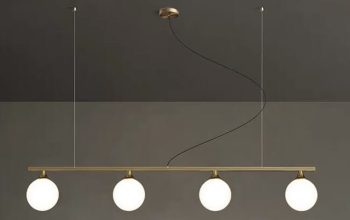Proper lighting is essential in showcasing artwork. The right lighting can help highlight the textures, colors, and details of the artwork, making it stand out more. However, a poorly lit artwork can ruin its overall impact. This article aims to provide insights into the various art lighting techniques and tips that can enhance your art display.
1. Understanding the Importance of Lighting
Before we delve deeper into the techniques, it is crucial to understand why lighting is crucial in art display. Light can highlight particular areas of artwork, create texture, and bring out more vibrant colors. With the right lighting techniques, the artwork can stand out and make an excellent focal point, enhancing the overall visual experience.
1.1 Types of Indoor Lighting
There are two types of indoor lighting – natural and artificial. Natural lighting comes directly from the sun’s rays, while artificial lighting comes from electric bulbs or fixtures.
1.2 The Effects of Lighting on Artwork
Lighting affects the way art is perceived. Bright lights cast shadows on the artwork, which can change how the art looks. The type and positioning of the lights can also affect the colors, bringing out more depth and dimension to the art.
2. Techniques for Art Lighting
There are several lighting techniques that you can use to bring out the best from your art display.
2.1 Ambient Lighting
Ambient lighting is a type of soft and diffused light that illuminates the entire room, creating a comfortable and relaxing environment that can enhance the art experience.
2.2 Accent Lighting
Accent lighting is used to draw attention to particular areas of the artwork. For instance, a bright light directed at a specific part of the painting can bring out color, texture, or details, creating an emphasis on that area.
2.3 Gallery Lighting
Gallery lighting is a type of lighting used to illuminate art in galleries and museums. It is a combination of ambient and accent lighting and aims to provide even coverage throughout the gallery space.
2.4 Track Lighting
Track lighting involves mounting tracks on the ceiling, from which spotlights and direction lights hang. This technique is a versatile method that allows for easy adjustments of the direction of the lights.
3. Tips for Art Lighting
Here are some tips to consider when planning for art lighting.
3.1 Avoid Direct Sunlight
Sunlight can quickly fade and bleach artwork. It is important to minimize or avoid direct sunlight altogether.
3.2 Position the Lights Strategically
Consider the type of lighting, the artwork’s positioning, and the room layout when placing the lights.
3.3 Use Quality Light Bulbs
Low-quality light bulbs can emit too much heat, which can damage the artwork. It is imperative to use high-quality light bulbs that are durable and energy-efficient.
3.4 Experiment with Lighting
Experiment with the various lighting techniques and positions until you find the perfect display for your artwork.
Lighting plays a significant role in enhancing the overall art display. By following the tips and techniques mentioned in this article, you can create a visually pleasing display that showcases your artwork’s best features. Remember that lighting is an art form in itself that can take time to perfect; don’t be afraid to experiment and try new techniques until you find the perfect balance of light and shadow that works well for your art.



